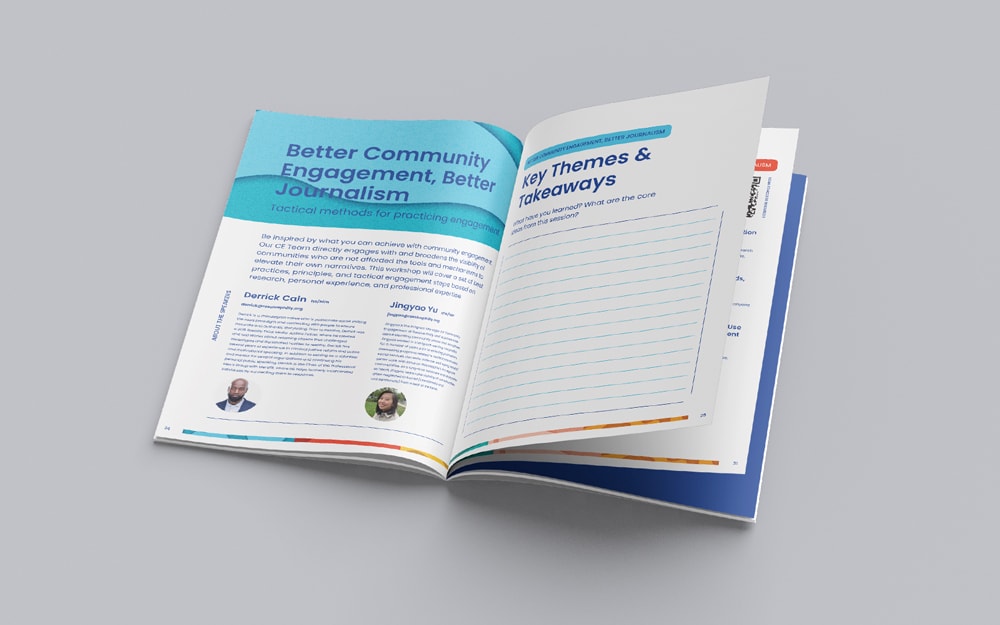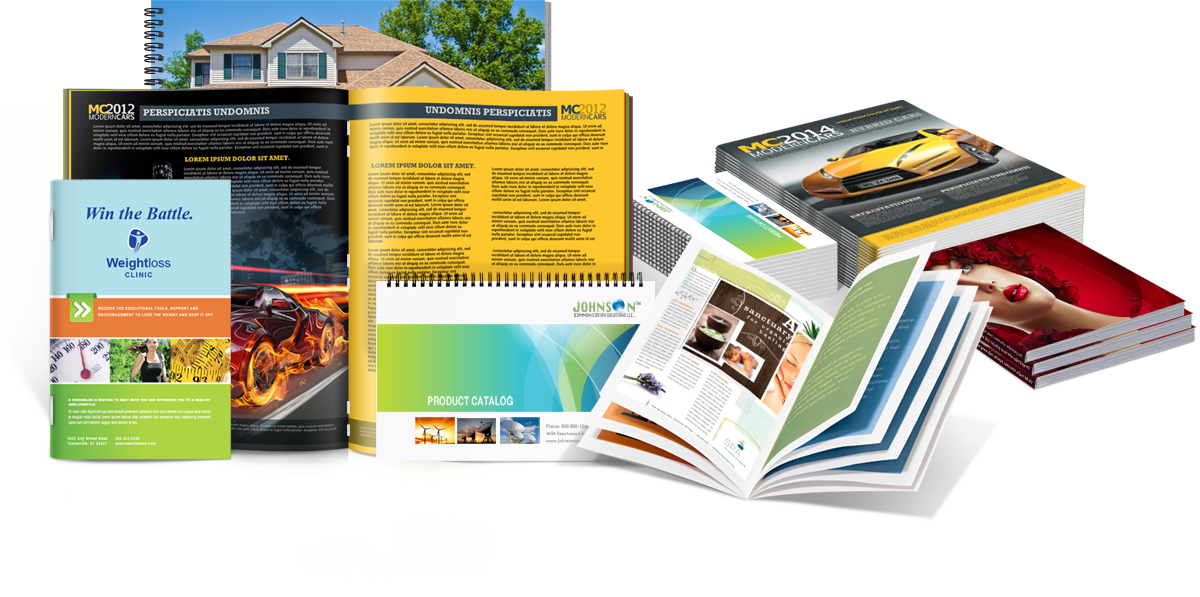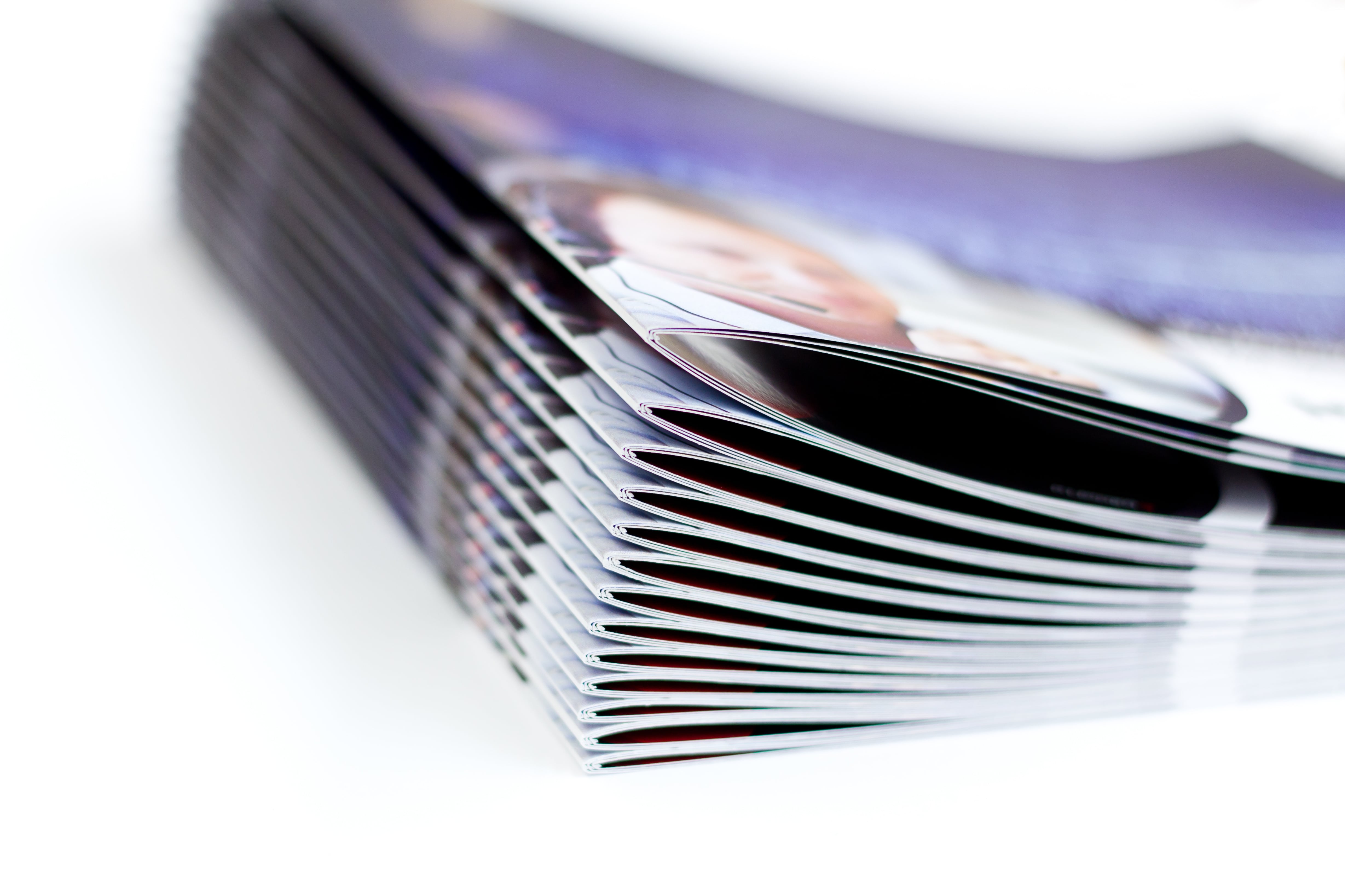The Top 5 Benefits of Modern Booklet Printing Techniques
The Top 5 Benefits of Modern Booklet Printing Techniques
Blog Article
The Essential Overview to Recognizing Pamphlet Printing Options and Techniques
The procedure of pamphlet printing includes numerous considerations that can significantly influence the final item. From choosing the suitable layout and size to comprehending the nuances of binding methods, each selection plays a necessary duty. Furthermore, factors such as paper supply and printing techniques more affect the effectiveness of the brochure. As one navigates these options, it becomes crucial to realize how they interconnect and what that suggests for the overall result.
Recognizing Booklet Styles and Dimensions
When taking into consideration booklet printing, recognizing the various formats and sizes available is vital for accomplishing the desired discussion. Pamphlets can be generated in many styles, consisting of saddle-stitched, spiral-bound, and perfect-bound, each offering unique benefits. Common sizes vary from common letter (8.5 x 11 inches) to smaller options like A5 (5.8 x 8.3 inches), permitting for versatility based on content and target audience.Selecting the ideal dimension can influence both the layout and reader engagement. Bigger dimensions may fit visually driven web content, while smaller sized layouts might be a lot more portable and straightforward. Furthermore, the variety of web pages impacts the choice of binding method, as thicker brochures may need stronger bindings. Ultimately, recognizing these aspects enables a much more tailored strategy, making sure that the end product aligns with the designated message and aesthetic, improving the total performance of the communication.
Picking the Right Paper Stock

Binding Techniques: Alternatives and Considerations
When it comes to binding techniques for brochures, several choices are available, each with distinctive benefits. Saddle stitch binding provides an affordable option for thinner brochures, while excellent binding strategies supply a more polished search for thicker magazines. Wire-O binding attracts attention for its longevity and convenience of usage, making it excellent for files that call for versatility.
Saddle Stitch Binding
Saddle stitch binding supplies a practical and cost-effective solution for constructing brochures, making it a prominent choice amongst organizations and publishers. This binding approach includes folding sheets of paper in half and stapling them along the fold line, developing a neat and organized appearance. Commonly ideal for booklets with a reduced web page count, saddle sewing is perfect for magazines, sales brochures, and training products. The simplicity of this method allows for quick manufacturing and is typically favored for advertising items or short runs. However, it is important to keep in mind that saddle stitch binding might not be appropriate for thicker pamphlets, as the spinal column may not stand up under raised weight. Overall, it continues to be a reliable option for many printing tasks.
Perfect Binding Strategies
Perfect binding is an extensively used technique that supplies a expert and sleek coating to booklets and magazines. This approach includes gluing the web pages with each other at the spine using a solid adhesive, allowing for a clean edge and the capability to hold a larger variety of web pages compared to saddle sewing. Perfect binding is especially ideal for thicker pamphlets, such as catalogs and yearly reports, where a durable, level spine is desired. Additionally, it supplies the choice for a published cover that can be created to improve aesthetic charm. However, factors to consider such as page count, paper weight, and the intended use the booklet should be taken into consideration, as they can impact toughness and total high quality.
Wire-O Binding Options
Wire-O binding, understood for its longevity and versatility, offers a superb option for pamphlets that require very easy web page transforming and a professional appearance. This binding technique utilizes a series of metal loops that hold web pages firmly, permitting them to exist flat when open. It is especially appropriate for brochures, handbooks, and presentations as a result of its durable nature. Wire-O binding is readily available in various colors and diameters, accommodating various web page counts and densities. In addition, it allows the incorporation of tabs and covers, boosting the pamphlet's overall visual. Factors to consider for Wire-O binding include the option of cord shade, the dimension of the loops, and the level of personalization desired, all of which can greatly affect the end product's look and capability.
Digital vs. Offset Printing: Which Is Best for You?
When choosing a printing approach for booklets, understanding the differences in between digital and offset printing is essential. Digital printing makes use of contemporary technology to create top quality prints rapidly and affordably, making it excellent for short runs or projects calling for fast turn-around times. It enables customization, supplying the ability to publish on-demand with very little waste.In comparison, balance out printing is a conventional technique that masters creating huge quantities with consistent quality. It entails transferring ink from a plate to a rubber blanket, then to the paper, which leads to specific details and vibrant colors. Nonetheless, counter printing typically needs longer setup times and is extra affordable for bigger volumes.Ultimately, the choice between digital and offset printing depends on project needs, budget, and desired amount. For little, time-sensitive projects, digital could be the most effective option, while offset may be preferable for bigger, premium productions.

Creating Your Pamphlet: Tips and Ideal Practices
When designing a brochure, cautious focus to layout, font style choice, and shade use can greatly enhance its efficiency. A well-structured design guides the viewers's eye, while appropriate typefaces assure readability and convey the wanted tone. Furthermore, effective use color can stimulate emotions and highlight vital details, making the general design a lot more impactful.
Selecting the Right Format
Just how can one effectively choose the appropriate layout for a brochure? It is necessary to review the pamphlet's purpose and target audience. A clean, arranged format boosts readability and engagement. Using a grid system can assist in lining up elements constantly, producing a professional appearance. In addition, incorporating visual power structure through varying dimensions and positionings of pictures and message can assist the viewers's eye and check emphasize essential details. It is also essential to leave adequate white space, which avoids overcrowding and enables far better emphasis. Finally, examining various layouts with mock-ups can supply insight into just how the layout does in real-world situations, guaranteeing that the end product meets both aesthetic and functional requirements.
Picking Proper Fonts
A well-chosen typeface can considerably improve the general style of a pamphlet, matching the layout and enhancing the material's message. The selection of font styles must take into consideration readability, specifically for body text, as it guarantees the details comes to all visitors. Sans-serif font styles are commonly liked for electronic formats, while serif typefaces can lend a conventional feeling in published materials. It's advisable to limit font options to two or three to preserve aesthetic coherence. In addition, font dimension plays an important role; headings must be not overwhelming yet unique, while body text must be comfy for reading. When picking typefaces, positioning with the booklet's theme and target audience is crucial for efficient communication and visual appeal.
Efficient Use Shade
Shade acts as a powerful tool in pamphlet design, forming assumptions and assisting viewers feelings. It can evoke feelings of calmness, enjoyment, More hints or count on, depending on the hues picked. Designers need to think about color concept principles, guaranteeing that the picked palette straightens with the booklet's message and target market. As an example, utilizing cozy shades like red and orange can develop urgency, while cooler tones like blue and environment-friendly foster tranquility.Additionally, comparison plays an important function; corresponding colors can improve readability and visual allure. Uniformity in shade usage throughout pages even more strengthens brand name identity and communication. Eventually, reliable color implementation not only captures attention but likewise reinforces the pamphlet's purpose, making it a vital facet of successful design.
Ending Up Touches: Coatings and Special Impacts
While lots of take into consideration the material and format of a pamphlet the most critical aspects, the finishing touches, such as layers and unique results, play an important role in boosting its overall charm. Coatings can give security and resilience, guaranteeing that the brochure withstands damage. Matte surfaces use an advanced, non-reflective surface area, while glossy finishes can make shades appear more attractive and lively. Unique results, like embossing or foil marking, add a tactile dimension that can develop a memorable perception. These methods can highlight particular areas, drawing focus to important details or producing visual passion. Additionally, UV covering can offer a high-shine surface that boosts the total look.Together, these ending up touches not only improve the pamphlet's aesthetic however likewise interact professionalism and focus to information, eventually leaving a lasting effect on the visitor.
Cost Considerations for Booklet Printing
Comprehending the various cost considerations for brochure printing is vital for organizations and companies intending to maximize their spending plans. Secret elements affecting expenses consist of the option of binding, paper, and ink approaches. Greater high quality materials, such as premium paper or specialized inks, generally boost the overall expenditure. Furthermore, the dimension and page matter of the pamphlet play a significant duty; larger booklets require more sources and time to produce.Another crucial consideration is the printing technique, whether electronic or offset, as each has its very own prices structure and suitability for different quantities. Businesses should also consider design costs, which can vary based upon complexity and the use of specialist solutions. Eventually, shipping and handling fees can include to the total, especially for large orders. By examining these components, organizations can make informed choices that align with their financial capabilities while achieving the preferred high quality in their printed products.
Regularly Asked Inquiries
What Are the Environmental Impacts of Brochure Printing?
The environmental influences of brochure printing include logging from paper manufacturing, carbon discharges from transport, and waste generation from thrown out products - Booklet Printing. Lasting practices, such as using recycled paper and eco-friendly inks, can reduce these effects
Exactly How Can I Ensure Color Precision in My Booklet?
To guarantee color accuracy in a pamphlet, one should make use of adjusted monitors, employ specialist shade profiles, perform examination prints, and pick top quality printing services that offer shade matching and proofing choices for ideal outcomes.
What Is the Normal Turn-around Time for Booklet Printing?
The regular turn-around time for pamphlet printing differs depending on the complexity and quantity - Booklet Printing. Usually, it ranges from a couple of days to 2 weeks, affected by factors such as printing methods and completing requirements
Are There Minimum Order Quantities for Pamphlet Printing?

Can I Publish Brochures in Multiple Languages?
Printing booklets in numerous languages is feasible. Several printing solutions use alternatives for multilingual or multilingual formats, permitting for efficient interaction. Mindful planning warranties that design elements suit numerous languages without endangering readability or looks. Additionally, aspects such as paper supply and printing techniques additional influence the efficiency of the booklet. When thinking about booklet printing, understanding the different styles and dimensions readily available is crucial for accomplishing the preferred discussion. When picking a printing technique for pamphlets, comprehending the distinctions between digital and counter printing is necessary. Furthermore, the dimension and page count of the pamphlet play a significant role; bigger booklets require even more resources and time to produce.Another important factor to consider is the printing strategy, whether electronic or countered, as each has its very pop over to these guys own pricing framework and suitability for different quantities. The ecological influences of brochure printing include logging from paper production, carbon exhausts from transportation, and waste generation from discarded products.
Report this page